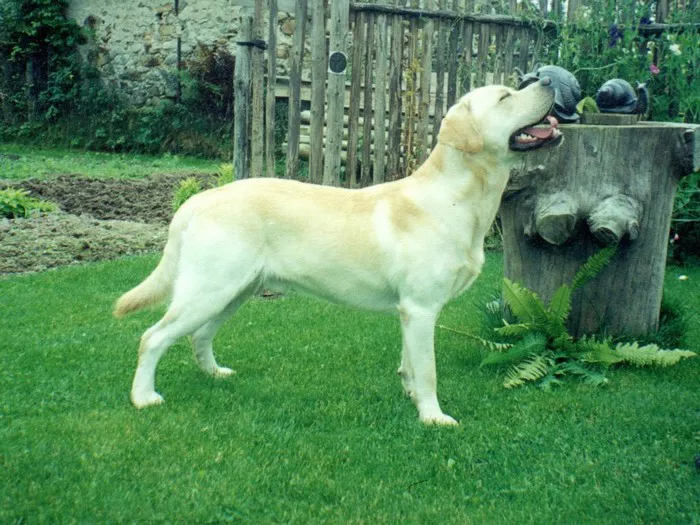Introduction
Training a Labrador to stop guarding its food is a crucial aspect of fostering a healthy and trusting relationship between you and your canine companion. Food guarding, also known as resource guarding, can manifest as growling, snapping, or other defensive behaviors around food. In this comprehensive guide, we explore the nuances of addressing and overcoming food guarding tendencies in Labradors. From understanding the root causes to implementing effective training techniques, this guide aims to equip you with the tools to create a positive and harmonious feeding environment for your beloved Labrador.
Understanding Food Guarding
Identifying Body Language: Labradors, like many dogs, may exhibit subtle or overt signs of food guarding. These can include stiff body posture, growling, baring teeth, or protective stances around their food bowl. Recognizing these cues is the first step in addressing the behavior.
Common Triggers: Food guarding can be triggered by various factors, including a dog‘s previous experiences, competition for resources, or fear of losing their food. Understanding these triggers helps tailor training approaches to address the specific needs of your Labrador.
Root Causes: Delving into the root causes of food guarding involves considering a Labrador’s background, early life experiences, and any instances of competition or scarcity. This holistic understanding guides the development of a personalized training plan.
Creating a Positive Feeding Environment
Consistent Feeding Routine: Establishing a consistent feeding routine contributes to a Labrador’s sense of security. Feed your Labrador at the same times each day, providing predictability and reducing anxiety around mealtime.
Hand-Feeding Practices: Incorporate hand-feeding into your Labrador’s routine. This practice helps associate human hands with positive interactions during mealtime, fostering trust and diminishing the likelihood of food guarding behavior.
Addition of High-Value Treats: Introduce high-value treats into your Labrador’s diet. This not only enhances the overall dining experience but also associates positive emotions with the presence of humans around their food.
Training Techniques: Building Trust and Addressing Food Guarding
Gradual Approach to Bowl Presence: Begin by sitting near your Labrador while they eat. Gradually increase your proximity over time, reinforcing the idea that your presence brings positive experiences rather than posing a threat.
Hand-Feeding Exercises: Incorporate hand-feeding exercises into training sessions. Offer a portion of your Labrador’s meal from your hand, encouraging them to associate your presence with the delivery of food. This helps diminish guarding tendencies.
Trade-Up Technique: Implement the trade-up technique by offering a higher-value treat in exchange for the food in your Labrador’s bowl. This positive reinforcement teaches them that relinquishing food results in a more valuable reward.
Understanding Trigger Points: Addressing Specific Situations
Children and Other Pets: If your Labrador exhibits food guarding tendencies around children or other pets, implement supervised feeding sessions. Teach children and other pets to respect your Labrador’s space during meals, reducing potential triggers.
Introducing Novel Items: Labrador food guarding can extend to other items. Introduce novel objects gradually, starting with non-threatening items. This helps your Labrador build confidence and reduces the likelihood of guarding behaviors.
Changing Food Bowls: Labradors may associate specific food bowls with their meals. Introduce different types of bowls gradually, ensuring that the change is associated with positive experiences and doesn’t trigger food guarding.
Building Trust through Positive Reinforcement
Timely Rewards: Positive reinforcement relies on timely rewards. Whenever your Labrador displays non-guarding behavior, immediately reward them with treats, praise, or affection. This reinforces the desired behavior effectively.
Consistent Reinforcement: Consistency is paramount in training. Reinforce positive behavior consistently, ensuring that your Labrador understands the link between their actions and the positive consequences of not guarding their food.
Patience in Training: Addressing food guarding requires patience. Progress may be gradual, and setbacks can occur. Approach training with patience, celebrating small victories, and adapting your approach as needed.
Advanced Training Techniques
Mealtime Interruptions: Gradually introduce controlled interruptions during meals. Gently touch your Labrador or briefly lift their food bowl while they eat. This advanced training builds resilience against potential disturbances.
Testing Boundaries: Test boundaries in a controlled manner. Encourage your Labrador to wait before approaching their food bowl, reinforcing the concept of patience and obedience. Gradually extend the waiting duration.
Simulating Real-Life Scenarios: Train in environments that simulate real-life scenarios. This could include feeding in the presence of guests or with other pets nearby. These simulations help reinforce positive behavior in practical situations.
Seeking Professional Guidance
Professional Assessment: If food guarding persists or escalates, seek the expertise of a certified dog trainer or behaviorist. A professional assessment can identify underlying issues and provide tailored strategies to address specific challenges.
Individualized Training Plans: Certified trainers or behaviorists can create individualized training plans based on your Labrador’s unique needs. Their guidance ensures a comprehensive approach to addressing food guarding and fostering a positive feeding environment.
Positive Reinforcement in Professional Training: Professional trainers emphasize positive reinforcement techniques. They can guide you in refining your training methods, providing insights into canine behavior and effective strategies for modifying unwanted guarding behaviors.
Conclusion
In the journey to train a Labrador to stop guarding its food, you embark on a path of fostering trust, understanding, and a positive feeding experience. Recognizing the signs and triggers of food guarding, creating a positive feeding environment, and implementing effective training techniques are essential components of success. With patience, consistency, and a commitment to positive reinforcement, you can guide your Labrador toward a harmonious relationship centered around trust and obedience. As you witness the transformation from guarded meals to shared moments of trust, savor the milestones achieved in building a positive and lasting bond with your loyal Labrador companion.


